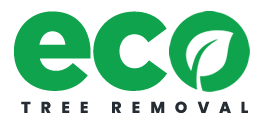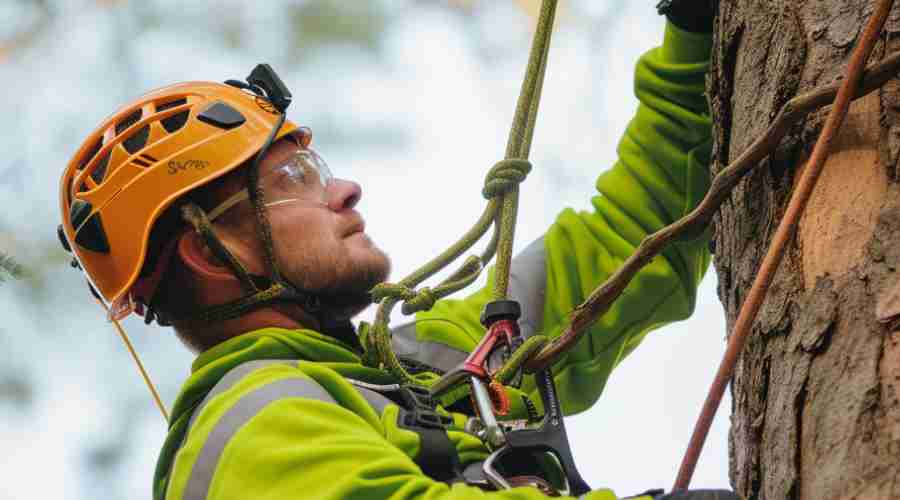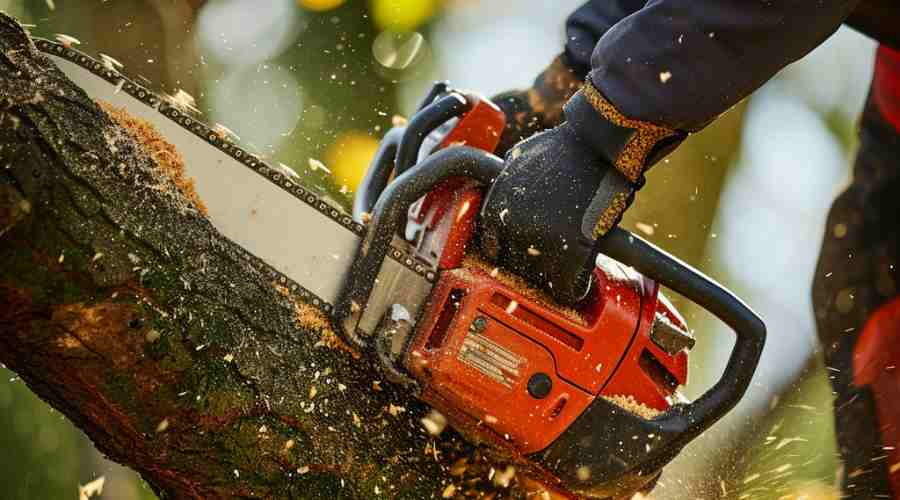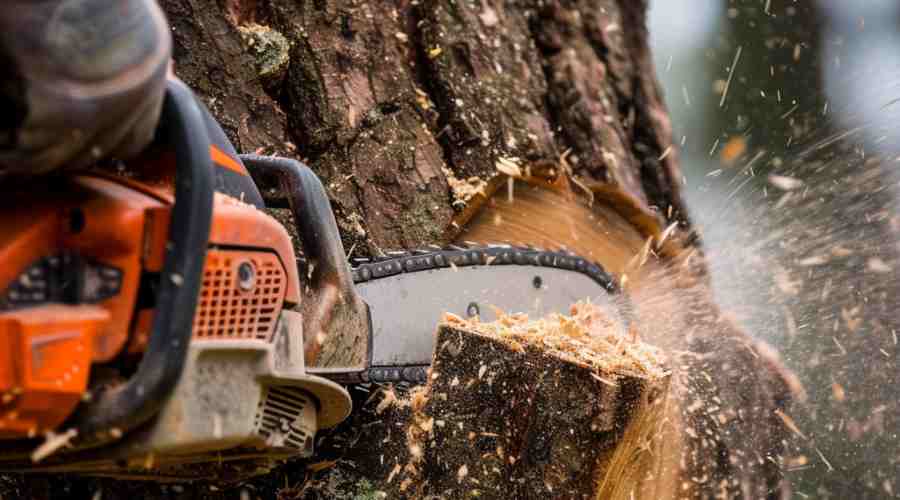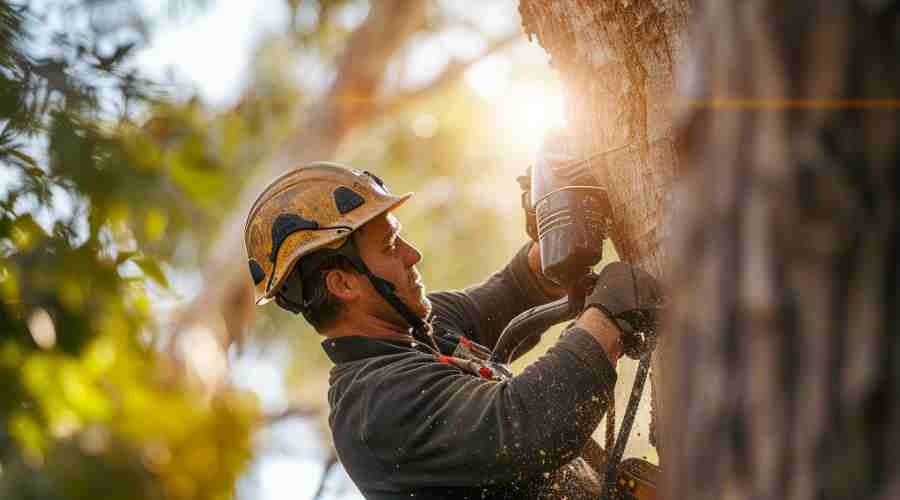How Much Does Tree Removal Cost in Australia?
2024 Tree Removal Cost Guide
Removing a tree on your property is often necessary for safety reasons or to prevent damage, but it can be an expensive job. On average, homeowners pay anywhere from $500 to $4,000+ to have a tree taken down, sometimes more for high-risk removals.
Prices for tree removal vary widely based on the size, type, location, access, and difficulty of the job. In this guide, we break down the major factors that influence the cost of tree removal in Australia.
Cost by Tree Size
The size of the tree is one of the biggest determinants of the removal cost. Larger trees require more tools and expertise to remove safely. Here is an overview of pricing by size category:
| Size | Height Range | Average Low Cost | Average High Cost |
|---|---|---|---|
| Small | <6m | $550 | $1,120 |
| Medium | 6-9m | $750 | $2,200 |
| Large | 9-20m | $1,670 | $4,610 |
| Extra-Large | 20-50m | $4,200 | $20,000 |
Small Trees
Small trees under 6 meters tall include Australian natives like bottlebrush, lilly pilly, and gum. Removing these averages $550-$1,120. Tight residential access can increase equipment needs and quotes 20%+.
Medium Trees
The 6-9 meter range includes maturing eucalyptus, acacias, and tea trees with diameters up to 24 inches. Average removal cost is $750-$2,200. Larger specimens over 30 years old often exceed $2,000.
Large Trees
Established eucalypts like Sydney blue gums and forest red gums stand 9-20 meters tall. Taking down these towering giants with complex structural dynamics safely generally runs $1,670-$4,610.
Extra Large Trees
Massive eucalypts and enormous rainforest specimen trees exceeding 20+ meters in height present monumental removal projects costing $4200 at a bare minimum. Mammoth old growth giants reaching up to 60 meters can run homeowners over $20,000 to dismantle and extract safely. These are intricate multi-day operations requiring crane rigging rental, debris management, traffic control, and specialty crew.
Cost by City
Pricing also varies across different cities and regions based on local rates:
| City | State | Variance from National Average | Average Price |
|---|---|---|---|
| Sydney | NSW | +15% | $2,001 |
| Melbourne | VIC | +10% | $1,914 |
| Brisbane | QLD | 0% | $1,740 |
| Perth | WA | -5% | $1,653 |
| Adelaide | SA | -10% | $1,566 |
| Canberra | ACT | +5% | $1,827 |
| Hobart | TAS | -15% | $1,479 |
| Darwin | NT | +10% | $1,914 |
| Gold Coast | QLD | -5% | $1,653 |
| Newcastle | NSW | 0% | $1,740 |
- Rates are highest in Sydney and Melbourne since demand is greater in bigger cities
- Brisbane prices align closely with the average cost
- Smaller cities like Adelaide tend to have lower rates
- Always get at least 3 quotes to find the best local rate
Average Cost By Tree Type
Certain tree species have features that make them more complicated and expensive to remove. Here are cost ranges by type of tree:
Palm Trees
- $350-$1,000
Palms are more affordable to remove since they have less dense branches. However, they grow very tall which requires equipment rental fees.
Pine Trees
- $800-$2,500
Pines have widespread roots and heavy trunks driving removal costs up. Needles also must be carefully disposed of.
Flowering Trees
- $500-$2,000
The shape and size of flowering trees like magnolias vary significantly, creating a wide price range. Limited space and power lines often make these removals more complex.
Fruit Trees
- $300-$1,000
Taking down fruit trees in smaller residential spaces takes precision. However, their modest size makes billing fairly affordable.
Evergreen Trees
- $1,500-$2,500
Evergreens like fir and spruce trees have year-round foliage, adding debris removal work to increase costs. Their immense mature size also drives prices higher.
Eucalyptus
- $1,200-$7,000
Gum trees like ironbarks and stringybarks are extremely tall with dense wood and foliage, making removal challenging. Oil residues complicates disposal.
Liquidambar
- $1,400-$2,500
Liquidambar trees grow very tall with star-shaped leaves that must be managed and disposed of carefully during removal.
London Plane
- $2,100-$7,500
Enormous height and wide crown shape demand crane removal. Limited leaf debris provides some savings.
Jacaranda
- $1300-$2,400
Jacaranda’s modest size helps costs but seasonal purple flowers create more cleanup work.
Conifers
- $950-$2,000
Pines, firs, redwoods, and other cone-bearing trees require year-round debris cleanup driving prices higher.
Lilly Pilly Trees
- $1500-$2700
Compact lilly pilly trees fit well in residential areas making removal pretty affordable.
Silky Oak Trees
- $1,250-$3,100
Reaching towering heights with mass foliage boosts effort required to remove silky oaks.
Norfolk Island Pines
- $2,500-$12,000
Hefty trunks coupled with immense height complicates dismantling these towering pines.
Swamp Trees
- $700-$1,800
Removing trees like willows or cypress from swamps or marshes brings environmental considerations that boosts costs.
Summary of Tree Types and Removal Cost Ranges
Certain tree species have features that make removal more complex:
| Tree Type | Height Range | Average Low Cost | Average High Cost |
|---|---|---|---|
| Eucalyptus | 15-40m | $1,200 | $7,000 |
| Liquidambar | 10-14m | $1,400 | $2,500 |
| London Plane | 9-20m | $2,100 | $7,500 |
| Jacaranda | 9-12m | $1,300 | $2,400 |
| Conifer | 9-15m | $950 | $2,000 |
| Lilli Pilly | 9-15m | $1,500 | $2,700 |
| Silky Oak | 8-18m | $1,250 | $3,100 |
| Radiata Pine | 10-20m | $1,450 | $4,200 |
| Norfolk Island Pine | 15-50m | $2,500 | $12,000 |
Factors That Determine Tree Removal Prices
There are several key factors that influence how much you will pay to have a tree professionally removed:
Type and Size of Tree
As shown above, extra-large hardwoods like oaks cost far more to remove than a small sapling. Palm type also have very different removal needs than flowering pear trees. Professional arborists categorise trees by height, canopy width, and trunk diameter to provide quotes. Typically, the larger the tree, the more intensive the removal work required.
Condition and Health
If a tree is dead, rotting, or otherwise structurally compromised, its imminent danger escalates the risk factor of removal. Taking down storm-damaged, diseased, or dying trees requires strict safety protocols to prevent further harm. This increased complexity means higher prices.
Emergency Removal
For trees that get uprooted, split apart, or toppled by intense weather like cyclones or floods, emergency removal is extremely hazardous. Specialised equipment and extensive manpower is mandatory in these urgent cases, hiking costs by 30% or more.
Number of Trees
If you need a row of 8 Italian cypress trees taken down, contractors give discounts for bulk pricing. Moreover, shared mechanism mobilisation and debris disposal smooths workflow. Pricing therefore goes down the more trees you have removed at one time.
Accessibility
Trees lingering over homes, electrical lines, roads, or other infrastructure present tricky removal conditions. Safety equipment positioning and choreographing fall direction gets increasingly elaborate based on surroundings. Tight access inflates pricing.
Front or Backyard
Removing trees in front yards or easements costs about 15% more than backyard due to greater disruption, visibility and regulations.
Other Important Cost Factors
Aside from tree and site traits, there are a few other considerations that influence removal extra costs:
- Permits & Applications – Taking down protected trees often requires approved paperwork from local councils. Tree removal permit fees generally range from $50 to $500.
- Trunk Diameter – The thicker the trunk, the more time and machinery needed to dismantle it. Diameters exceeding 3 feet can add $800 or more to removal costs.
- Travel Time & Distance – Companies bill for driving time plus mileage costs for distant locations, easily adding $200 or more per job. Always choose local arborists when possible.
- Arborist vs Gardener – Qualified arborists charge $100-$250 more on average but are essential for safely removing large, damaged, or protected trees.
Additional Tree Services Costs
Beyond taking down entire trees, there are some related services that homeowners may need pricing on:
Stump Removal
- Small – $100-$250
- Medium – $250-$400
- Large – $400-$700
- X-Large – $700+
Having a professional pulverise remaining tree stumps after removal prevents regrowth and evens out the surface.
Land Clearing
- Per Square Metre – $8,000-$15,000
Clearing all trees and vegetation from plots of land prepares for construction or development.
Tree Trimming
- Small – $180
- Medium – $350
- Large – $450+
Strategically trimming tree branches maintains health and appearance. Expect $180+ even for small jobs.
Debris Removal
- Single Tree – $150-$400
- 2-3 Trees – $400-$900
- Orchard Area – $900+
Removal of logs, branches, leaves/needles, and rubble left from tree removal job. Pricing varies based on volume of debris or green waste generated by number of trees.
Tree Relocation
- Small Tree Move – $300-$800
- Mature Tree Transplanting – $1,000-$5,000
Carefully digging up and transporting whole trees for replanting in better locations when space is limited.
Emergency Storm Damage Removal
- Single – $1,500-$4,000
- Multiple Trees – $4,500+
Short notice removal of trees downed or severely damaged by storms involving additional safety risks and logistics. May require after hours or overnight work.
FAQ
Does tree size or height matter more for cost?
Tree height is generally more important than width for estimating removal costs. Tall heights increase risk and tools needs. However very wide canopies require additional time and labor to dismantle carefully.
When do I need a permit for removing a tree?
If your tree is in a protected zone like a national forest or near power cables, special city council permits are usually required listing approved contractors. Fines up to $50,000 can result otherwise!
Should fees for trimming trees be cheap?
While tree pruning costs less than removal, it still poses risks requiring training and insurance. Paying extremely cheap rates often means getting unqualified workers, jeopardising safety. Expect to pay $180+ even for small trees.
Conclusion
As you can see, many variables impact pricing for removing or servicing trees in Australia.
When hiring a professional tree removal company, always get multiple quotes and check credentials to ensure fair pricing and safety.
Consider all tree service expenses as an investment in protecting your home against property damage and liability from unhealthy trees in need of care.
Pro Tip: When getting a rough estimate for the price of removal, be sure to ask if the quote includes use of an elevated work platform like a cherry picker. Taking down large trees often requires this type of gear along with stump grinder afterward to completely extract the tree while preserving structural integrity of surrounding spaces. A qualified tree surgeon trained in specialised tree felling procedures can assess any risks to safety or property based on height, limb load, and other traits that impact true pricing. Oftentimes additional services tack on hidden costs if agreements are vague upfront.
